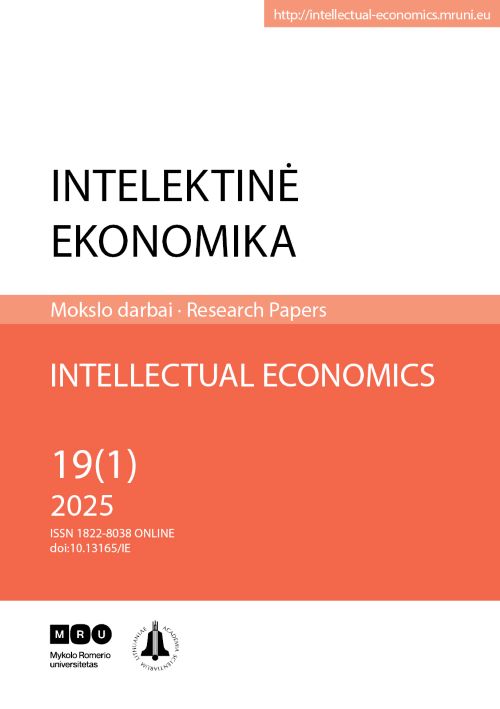Technology Development and Creative Destruction: Challenges for Digital Transformation in Entrepreneurship, Work, and Education
##plugins.themes.bootstrap3.article.main##
Abstract
Purpose. Digital transformation varies in different countries. Therefore, the aim of this paper is to specifically analyze how these changes have occurred in large and small countries and to point out differences in the impact of new technologies on digital entrepreneurship, work modalities and education and to examine the connection between creative destruction, new technologies and digital entrepreneurship.
Design/methodology/approach. By systematically reviewing and analyzing a variety of scientific literature, the results of the latest research and indicators that indicate the development of this dynamic field, we perform a comparative analysis between small and large countries and identify differences and similarities between them. We selected Baltic countries in our study because they are exemplary barometers for innovation and digital entrepreneurship development. In addition, we selected three other countries because of their similarities - Slovenia, North Macedonia and Cyprus. All three countries are relatively small in terms of population and economic size, which allows them to be agile and quickly adopt innovative solutions. In this regard, we also considered China and Japan as two large countries that are at the forefront of innovation and digital entrepreneurship. We compared them from several different angles in order to highlight their specificities. We put all the
specificities and comparable results of small and large countries in the context of creative destruction, artificial intelligence, new work modalities, and new knowledge, in order to point out their interdependence.
Findings. Collaboration between the public and private sectors is a common strategy in both small and large countries to drive innovation and support digital entrepreneurship. Both small and large countries emphasize education and skills development, particularly in STEM fields, to create a skilled workforce that can drive innovation. In addition, both types of countries recognize the importance of digital transformation and invest in digital infrastructure, technologies, and skills to stay competitive in the global innovation landscape. At last, whatever the technological future holds it will be defined by continuous adaptation, perpetual innovation, and the search for new potential. Departing from these observations, this study seeks to add the global perspective to the already lively debate on possible changes that may result in the labour markets as a consequence of the recent advent of generative AI. Small countries are struggling to build a robust AI ecosystem amid the prevailing global dominance of the United States and China. Our findings also highlight the potentially different growth dynamics among countries with lower GDP levels and different levels of digital skills. Policymakers should act to mitigate these risks. A drastic shift towards rapid improvements in productivity growth and investment in education and skills development will reduce these disparities.
Research implications. The specificity of this research is that there are no similar considerations in the literature. Mostly they are concerned with pointing out the differences between rich and poor countries, but not taking into account economies of scale and wealth of resources. Therefore, we think that this study will give a new perspective on this important and current issue. The findings emphasize the significance of AI which penetrates every sphere of human life. In line with this, it is imperative for policy makers to formulate roadmap to see the opportunities and identify its likely threats. In addition, ethical considerations are vital for creating AI systems that benefit society while minimizing harm. Policymakers should act to mitigate these risks. A drastic shift towards rapid improvements in productivity growth and investment in education and skills development will reduce these disparities.
Keywords: Schumpeter’s creative destruction theory, Artificial intelligence, digital transformation, digital entrepreneurship, digital entrepreneurship Index (DEI), creative destruction, innovation, workforce.
JEL Classification: 031; O33; 038
##plugins.themes.bootstrap3.article.details##

This work is licensed under a Creative Commons Attribution 4.0 International License.
Authors contributing to Intellectual Economics agree to publish their articles under a Creative Commons Attribution 4.0 International Public (CC BY) License, allowing third parties to share their work (copy, distribute, transmit) and to adapt it, under the condition that the authors are given credit, and that in the event of reuse or distribution, the terms of this licence are made clear.


 https://orcid.org/0000-0003-2002-8732
https://orcid.org/0000-0003-2002-8732





